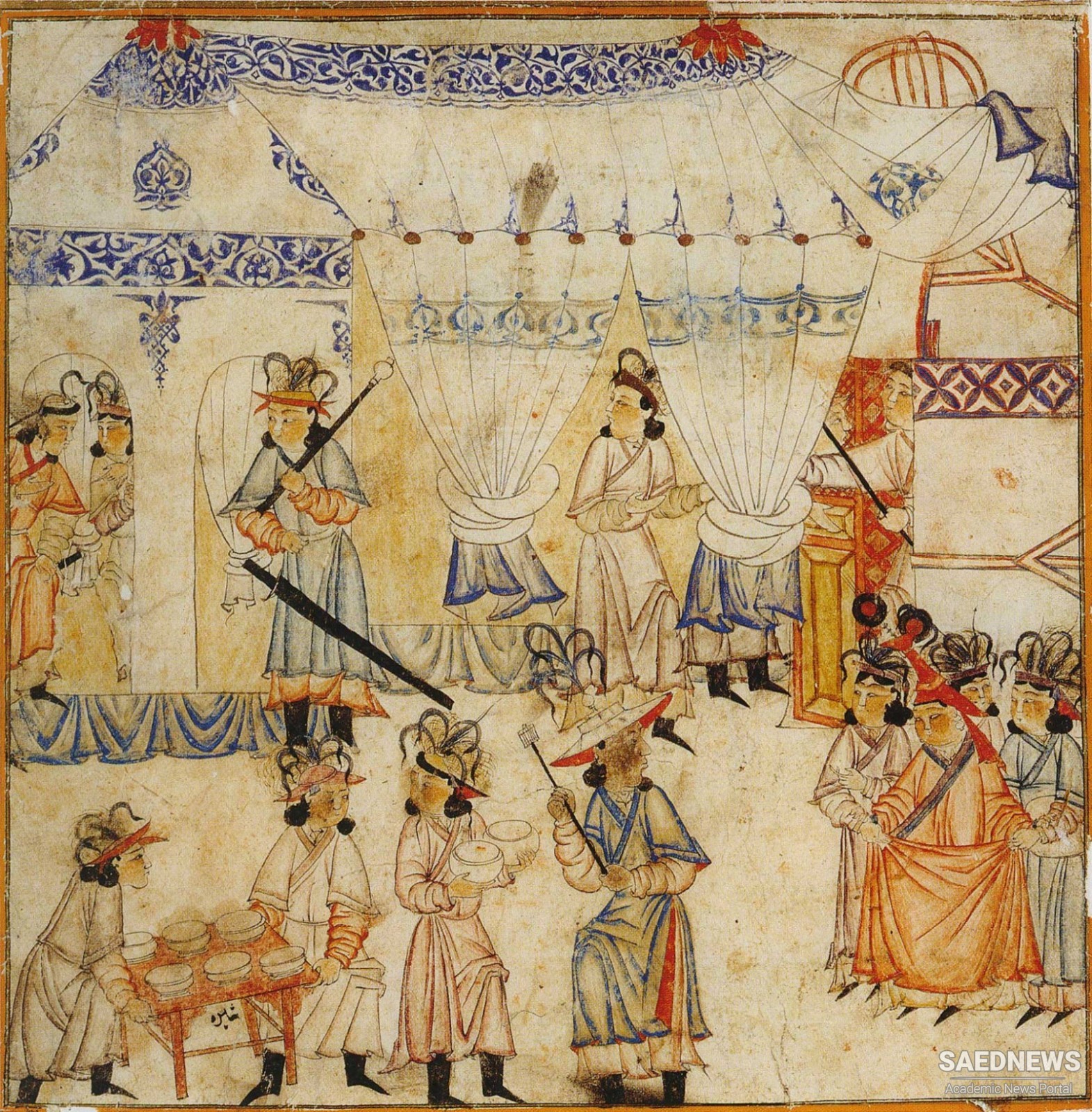While the Nestorians were being pushed to the margins of the historical scene, the rise of contacts with Europe and India during the Timurid period paved the way for new political and economicopportunities from which non-Muslims benefited. A brief summary of the events which followed the collapse of Mongol rule will help us understand the socio-political and economic situation of non-Muslims under the Safavids. From 1336 until the end of the 15th century, Iran was torn between different factions who strove to rule the country. The chief protagonists were four local dynasties, whose respective areas of influence comprised the entire country: the Muzaffarids took control over Central Iran, the Jalayirids imposed themselves in Mesopotamia and Azerbaijan, the Karts continued to rule in Khurasan, and the Sarbadars in Western Khurasan. Except for the Jalayirids, all of them were eliminated by Timur Lang.
Timur Lang was Mongol in origin but his tribe had adopted both the Turkish language and Islamic religion. His career appears very similar to Gengis Khan’s; however, Morgan notes that Timur Lang surpassed his predecessor in cruelty. His ruthlessness is all the more remarkable as he was not an alien in the region like Gengis Khan, but a Muslim. He tortured and slaughtered his own co-religionists on a massive scale.495 He began campaigning in 1361, after affirming his position as leader of his own tribe. By 1370 he had become the undisputed master of Transoxania, and was thus encouraged to continue his conquests. He subjugated Iran, and then plundered Syria and India. Like the Mongols, he showed some signs of pragmatism in Iran, where he spared cities and people when economic interests were at sake.
Thus, the wealthy dignitaries of Herat (in 1381) and the craftsmen of Tabriz (in 1386) were spared. Even Yazd was not destroyed, despite its having defied Timur’s rule in 1396, because the town was an important centre of textile manufacture.496 His pragmatism might have prompted him to overcome his intolerance and employ non-Muslim administrators, had the latter been still involved in the state bureaucracy; however, as we saw, the Muslims had been outraged by their ascendancy under the early Mongol rulers and had instigated the dismissal of the Jews and Christians after the conversion of the Mongol rulers to Islam. Since the non-Muslims were barred from positions of influence, they had no sympathetic party close to the rulers to intercede on their behalf. As a result, the general picture of their condition under Timur is quite grim. Timur did not have much trust in the Persian bureaucrats either. He distributed the key administrative positions to Turko-Mongol military figures in order to keep the bureaucracy tightly under his control.
In this respect, both the continuator of Bar Hebraeus and Sharaf al-Din Ali Yazdi have had more to say on Timur’s atrocities than his philanthropic deeds. One of the first non-Muslim peoples to suffer from Timur’s onslaughts were the Georgians. By 1387, Timur had already subjugated Azerbaijan and was busy devastating Georgia. The Georgian king, Bagrat V was forced to accept Islam in order to save his life, but apostatized after Timur’s departure. As a result Georgia was afflicted with more calamities in 1392, 1394, 1399, 1401 and 1403.498 One rebellion against Timur was remarkable in that one of its leaders Gudarz was identified as a Zoroastrian by some sources. The revolt was crushed at Sirjan in 1396 and Gudarz suffered the same fate as other rebel leaders such as Sultan Muhammad (son of Abu Sa'id).499 If Gudarz was truly a Zoroastrian, this shows that even after the tenth century, the Zoroastrians were not completely politically marginalized. We will see later that another Zoroastrian reached a high rank during the Afghan occupation,500 thus, in periods of turmoil, it was possible to see a few non-Muslims play political roles.


 The Caliphate of Imam Ali
The Caliphate of Imam Ali














































